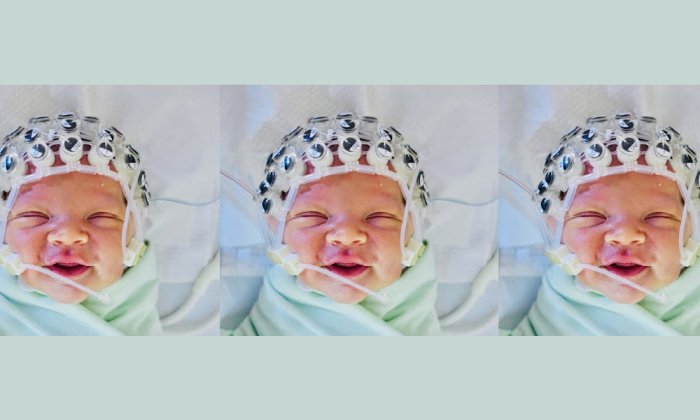 |
| Newborn baby participating in listening experiment (courtesy Eszter Rozgonyiné Lányi). |
[Published in Scientific American and MIT Press Reader]
In 2009, we found that newborns possess the ability to discern a regular pulse – the beat – in music. It’s a skill that might seem trivial to most of us but that’s fundamental to the creation and appreciation of music. The discovery sparked a profound curiosity in me, leading to an exploration of the biological underpinnings of our innate capacity for music, commonly referred to as “musicality.”
In a nutshell, the experiment involved playing drum rhythms, occasionally omitting a beat, and observing the newborns’ responses. Astonishingly, these tiny participants displayed an anticipation of the missing beat, as their brains exhibited a distinct spike, signaling a violation of their expectations when a note was omitted. This discovery not only unveiled the musical prowess of newborns but also helped lay the foundation for a burgeoning field dedicated to studying the origins of musicality.
Yet, as with any discovery, skepticism emerged (as it should). Some colleagues challenged our interpretation of the results, suggesting alternate explanations rooted in the acoustic nature of the stimuli we employed. Others argued that the observed reactions were a result of statistical learning, questioning the validity of beat perception being a separate mechanism essential to our musical capacity. Infants actively engage in statistical learning as they acquire a new language, enabling them to grasp elements such as word order and common accent structures in their native language. Why would music perception be any different?
To address these challenges, in 2015, our group decided to revisit and overhaul our earlier beat perception study, expanding its scope, method and scale, and, once more, decided to include, next to newborns, adults (musicians and non-musicians) and macaque monkeys.
[...] Continue reading in The MIT Press Reader.
No comments:
Post a Comment